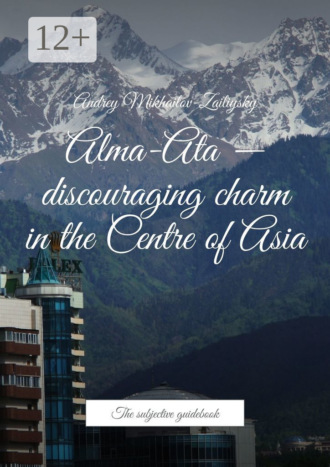
Полная версия
Alma-Ata – discouraging charm in the Centre of Asia. The subjective guidebook
The first sunbeam that has slipped from behind the nearest mountain catches the alpiniad’s participants already on the move. The chain of people stretches for many hundreds of meters; they busily crisp with their heavy boots against the frozen snow, hammer stones with ice axes, intently breathe in the frosty air and together feel sorry, silently and out loud, for those who stayed below, downtown. And although not everyone who walks in this column for the first time will get to Himalayas, or become hikers, even if they never make the mount again, this proud acute feeling of the conquered peak will stay within them forever.
…This tradition keeps on living in the new Kazakhstan, too. The regular climbs to the legendary Komsomol peak (hastily renamed by the sportive org-men the more accustomed to the today’s ear Nursultan) attract in the same way both veteran hikers and newcomers
Medeo skating rink that we’ll love forever!
The alpine skating rink Medeo is more than the sports venue. We may surely say that there’s no other such a popular Olympic brand in Kazakhstan.
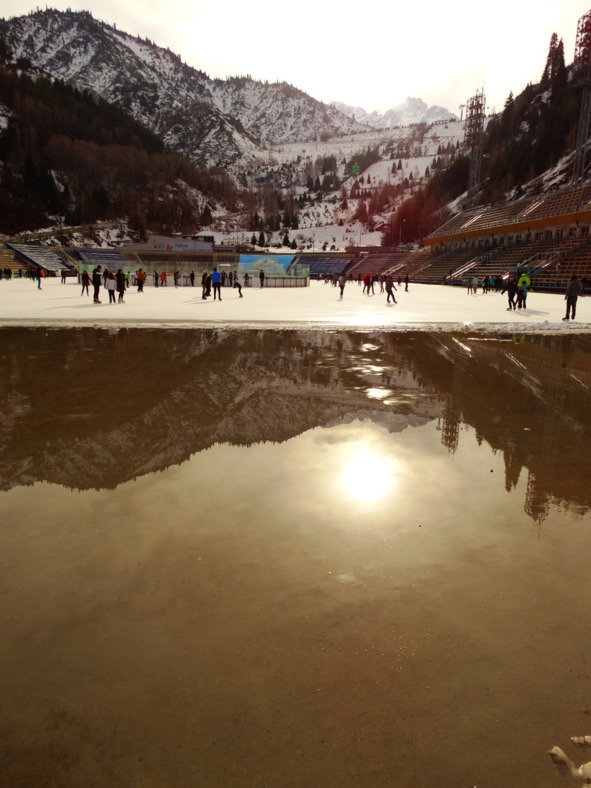
And though much time passed since that period when this alpine skating rink was rightly called “the factory of records” – memory remains. And not only with the chroniclers registering the world sports achievements, but also with all those who skated, skate and will skate on Medeo’s speedy ice.
Right after its opening Medeo became people’s favourite place for spending their time off. In those years when the chilling equipment of the rink functioned properly, it was open from September till April. Although for all comers it was open only at weekends, the annual attendance figure reached 150 thousand people!
To visit Medeo with friends, “to go skating” was a usual and common thing for us, young Alma-Ata residents of that time. (Despite the fact that it was never easy to get there by bus.) Sometimes in warm days of autumn the skating rink was fully crammed with skating people. But – so many loving hearts found each other in these crowds! So many sudden collisions led to long-lasting relationships!
As for these photos, they were taken recently. Today the second and the third generations of Medeo fans skate on its ice.
Winter in Zailiyskyi Alatau
In mountains winter reigns longer than it does at their foot. And at the highest peaks, where bare rocks argue with eternal ice, its vacation is shorter than that of any civil servant in Nursultan. The sun will just warm up the tops and melt all the winter snow, but here we go again – black clouds are coming from behind the ridge, and icy rain begins to powder the slopes with the snow grains.
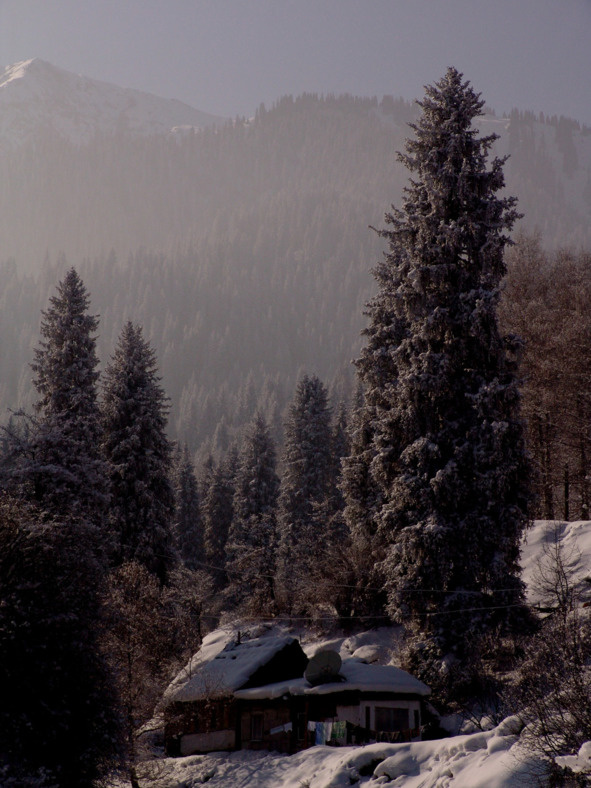
Middle altitude mountains with their lush forests and fir woods are another matter. We have the full-scale summer here. With hovering butterflies, fragrant raspberries and warm sun showers. Both spring and autumn are never reminiscent of bustling and hustling holidays here. That is why winter, as if understanding its soonest resignation, tries to do its best to show off. So, it presses fur boughs with piles of snow nearly down to earth, transforms rapid mountain streams into sparkling crystal, and buries strewn sharp boulders under layers of snow 1 m thick.
Our mountains are calm and quiet in winter. If you skirt few mountain cabins, shashlyk-smelling Medeo and arrogant Chimbulak, you can go deep into such forest serenity and such benchmark primevalness, which is haunted by amateurs from distant places, covering thousands kilometers, crossing many borders, and spending lots of money. Any Almaty citizen is a man of destiny in this regard. To see and feel all this bliss he just has to take a 30-minutes ride by bus and to pay 80 tenge only.
Alma-Ata: the winter tale
I can say nothing about the today’s capital of Kazakhstan, but the former one – Alma-Ata – is lovely at any time of the year. Including winter. Despite the languishing epithet “south”, given to the city, and that it is situated in the same latitude with Istanbul, Rome, Barcelona, and New-York, stems of thermometers once fell here below 38°С. As for the snow, there is so plenty of it here, that Winter Asian Games were already held in the city, and it claims to have Winter Olympic Games with all good reason!
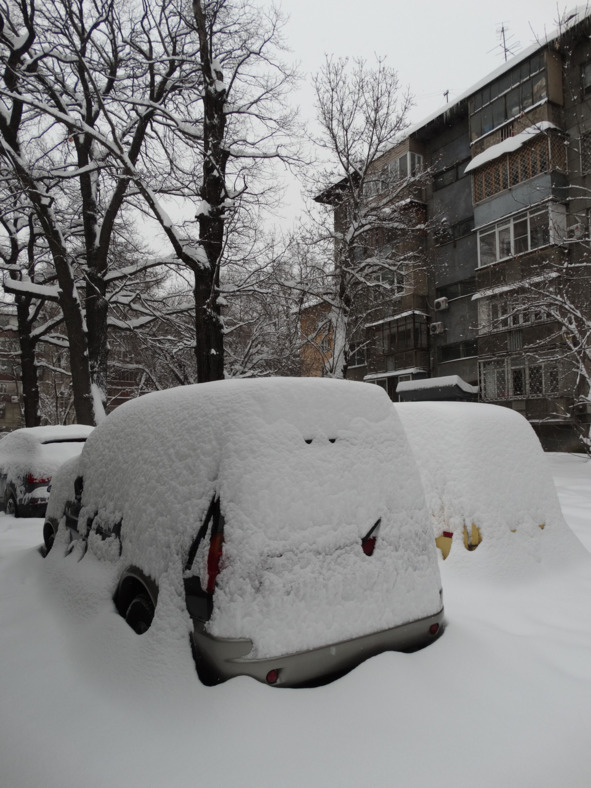
As for the citizens, I won’t palter with truth: our attitude towards winters can’t be called lock, stock, and barrel positive. Predatory bills for heating from utility providers alone can easily envenom anybody’s life. But the pleasure felt by south people in winter, who have been well-warmed and tired during the summer heat, cannot be compared to feelings of inhabitants in those cities where they manage neither to warm up nor get tired during summer.
There is one thing I can declare unequivocally – our city looks so solemn, fabulous and full of light only in the morning after a snowfall, and no other moments. When the sun that has risen from behind the mountain tops in a flash of a second will decorate snow piles and snowy trees with millions of sparkles, flutter with celestial shadows under heavy branches, and shine on rosy cheeks of student girls, hastily going to their lessons. This is an incredible state of mind and soul!
Our Cathedral!
This elegant building in the center of the old park is one of the main decorations of the city for more than 100 years. (Name of city was changed three times: Vernyj – Alma-Ata – Almaty during this time).
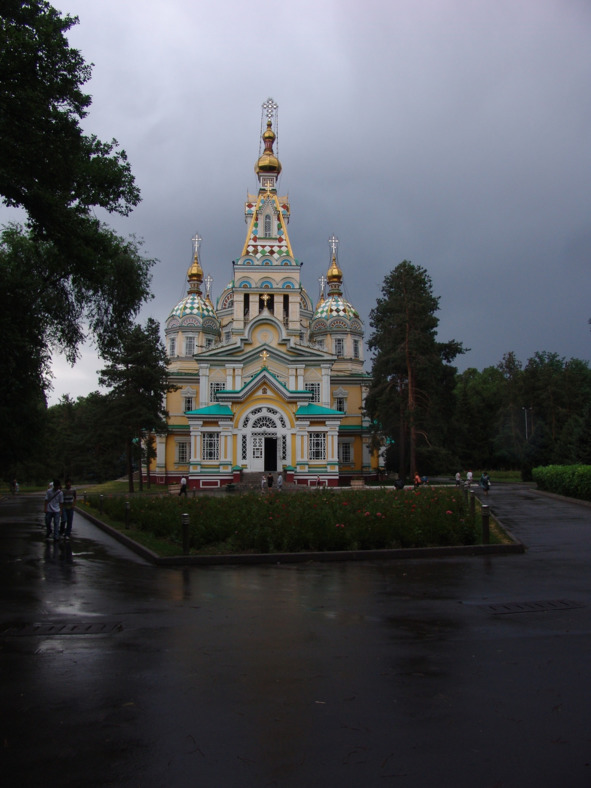
Orthodox Saint-Ascension Cathedral was built by the most recognizable Vernyj architect and town planner Andrei Zenkovin 1906; and it immediately became one of the attractions of Semirechye region and pride subject of parishioners and townspeople. Pride hesitet during the severe earthquake in 1911when a lot of buildings were destroyed, but a 44-meter Cathedral withstood (its predecessor, by the way, was destroyed by the disaster in 1897). Let me remind you that it was not some indistinct shocks that townspeople got used to, but the earthquake measuring 8—10 on the Richter scale!
Stability of the Cathedral has proved Zenkov’s anti-seismic construction approach. Wooden frame made from strong Tien Shan firs, fastened together with iron pins in a flexible structure was put on the monolith of reinforced concrete. Many high-rise buildings are being built according to this principle in the southern capital.
Cathedral resisted the next disaster as well; this time it was social disaster, when militant atheists unleashed their anger on everything that reminded of God. The Church, however, was kicked out of the temple; the building was a museum during the Soviet times, well known to everyone who read the novel “Keeper of Antiquities” by Dombrowski. The bells were dropped, but crosses stayed.
Later Cathedral became concert-exhibition hall. And then it was returned to the parishioners again. But regardless of all of this, the true citizens of all political preferences, religions and nationalities continue to love and be proud of this wonderful building in the old park. And our love does not age! I know myself that it is impossible to pass by, even if in a hurry. You will turn from your way just to admire this majestic heritage of the city once again!
Love and dove
In the very heart of Almaty, in an old park, nearby the magnificent Voznessenskiy cathedral, pigeons have reigned for more than one century.
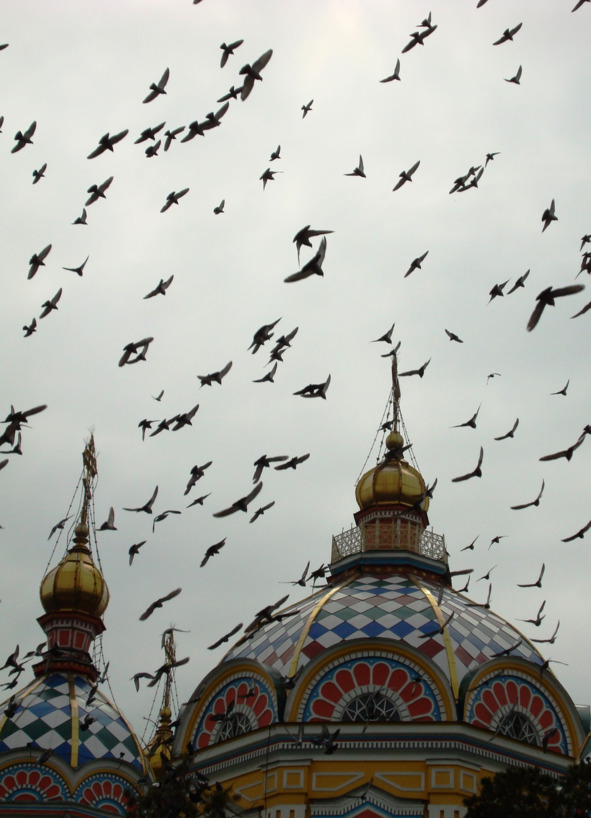
Here, to one and the same permanent cooing and flickering wings flapping, time goes in different manner than at any other place. Time goes slowly here. And if there is some peculiar Almatynian rite of passage, connecting such different peoples and such unlike generations that inhabited and are inhabiting our city, then it performs right here, in the shadows of the temple.
Every one of us visited this place in his childhood, with his parents, absorbedly fed and enthusiastically chased these agitated birds, and then brought along his own children to this place for them to do the same thing, later his grandchildren, and – he who was lucky – his great grandchildren. Thus, pigeons of the Voznessenskiy cathedral (how many generations of them there were, no one knows exactly) are this very alive link that connects Almaty citizens with their past, future, and with one another. It equals local citizens with newcomers. And makes everyone love this glorious city.
The Recreation Park
This park is nearly of the same age with the city of Vernyi (now Almaty). Its fortress and settlement were founded in 1854, and the Public garden at its southern outskirts appeared in 1856. However, its primary mission – to be a transplant nursery and provide local farmers with young fruit plants – very soon (as soon as trees accrued) faded into insignificance. As for the leisure zone, it became more significant, and it was appreciated and loved by city people.
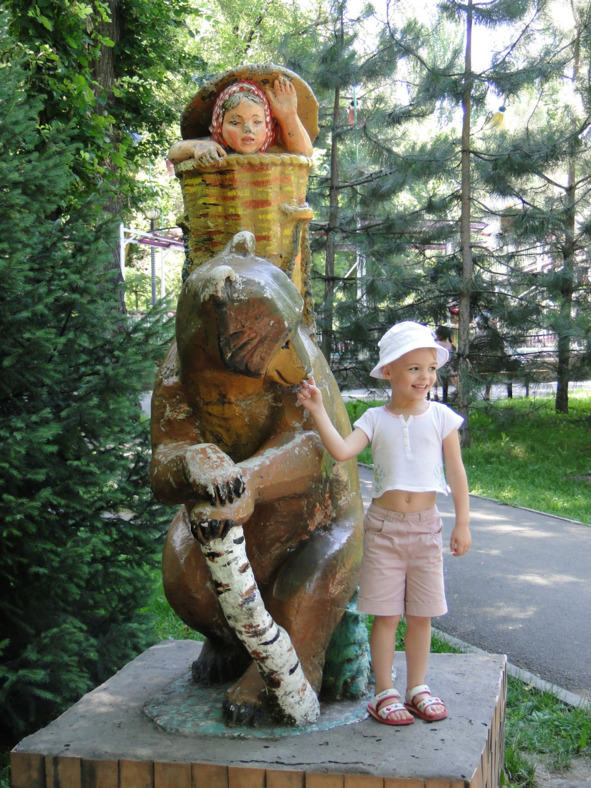
We have trees (through thick and thin) and alleys dating from that period: birch, oak, poplar, and pine ones – they were planted by students from the local gardening school 100 years ago. Plus the pond with an artificial small island that emerged here in 1870s. And – this strange attraction that city and suburban residents of all ages still feel towards this shady park.
In my childhood the Central Recreation Park named after Gorky (Gorky parks existed in Moscow and in cities all over Soviet Union) was always the place of festivity. Despite the simplicity of amusement rides and the explicit shabbiness of food courts, the reckless excitement from entertainments added to the enthusiasm of Soviet people did let us enjoy the real proper rest. Some amateur performance at the open-air stage, Ferris wheel, children’s railway, cotton candy for kids and incredible but delicious shashlik and beer for adults, the obligatory visit of the adjoining zoo – all this I still remember in minute details.
In fact, an unspoiled person doesn’t need to rush to Disneyland to get some good rest anyway. Even more so, nowadays the park is changing right before your eyes and becomes better and more cultured.
Alma-Ata Zoo
I remember it as much as I remember my own self. Because it is our good old tradition – to visit this zoo together with your child. Not only all native Almаatynians have gone through this tradition, but the majority of people inhabiting the whole republic, too.
It even seems to me that we have been familiar with some box-inhabitants for half a century. With nervous bears, for example, or with thoughtful baboons. It is surely only an illusion. As for giraffes and rhinos, they appeared here much later for sure. But they also have become painfully familiar. Nothing can offset representatives of the wild world as much as captivity…
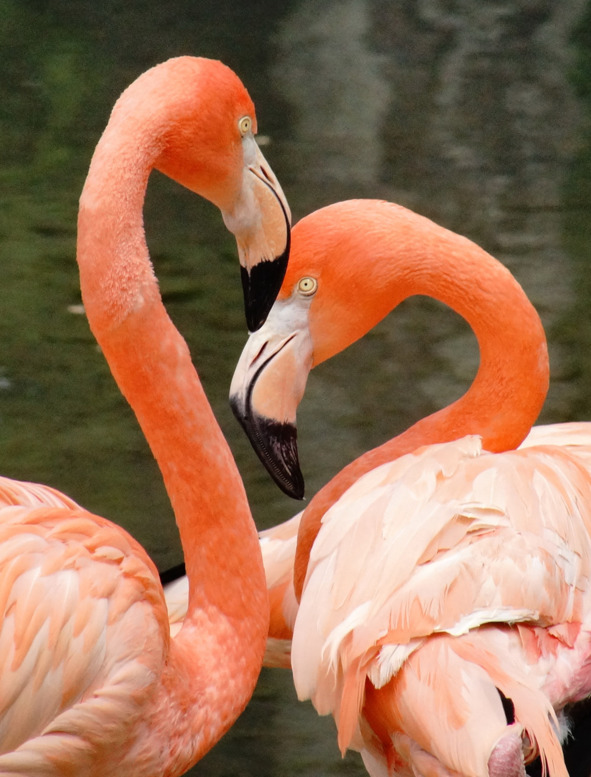
Well, I’ve jumped to the sad subject! However, I do know that 90 per cent of all zoo inhabitants were born from… inhabitants of other zoos. And anyway they feel much better than their siblings, which became the exhibits at zoological museums, or exotic cuisine foods. It’s a matter far from safe – to live with a human on the same planet.
Actually, our Almaty zoo that was founded back in the symbolic 1937 was always a peculiar touchstone of humanist attitude towards animals in the Soviet Union. It continues to improve itself in order to be up to its status. That is why, regardless of their level of humanity, our citizens keep on visiting the zoo with their kids as soon as they become toddlers.
How the Academy of Sciences of Kazakhstan was built
Few people know that the temple of Kazakhstan science was designed by the famous Soviet architect A.V. Shchusev, who designed Lenin’s mausoleum as well.
Designing of the Academy of Sciences of the Kazakh SSR started a year later after the war. K.I. Satpayev, the first President of the Academy, in his first report said: “According to the personal instructions of Comrade Stalin, preparation of the construction of the main building of the Academy of Sciences of the Kazakh SSR is in progress, it will be a monumental building in the capital of Kazakhstan – Alma-Ata. Construction of the main building of the Academy will be completed in the fourth five-year period.”
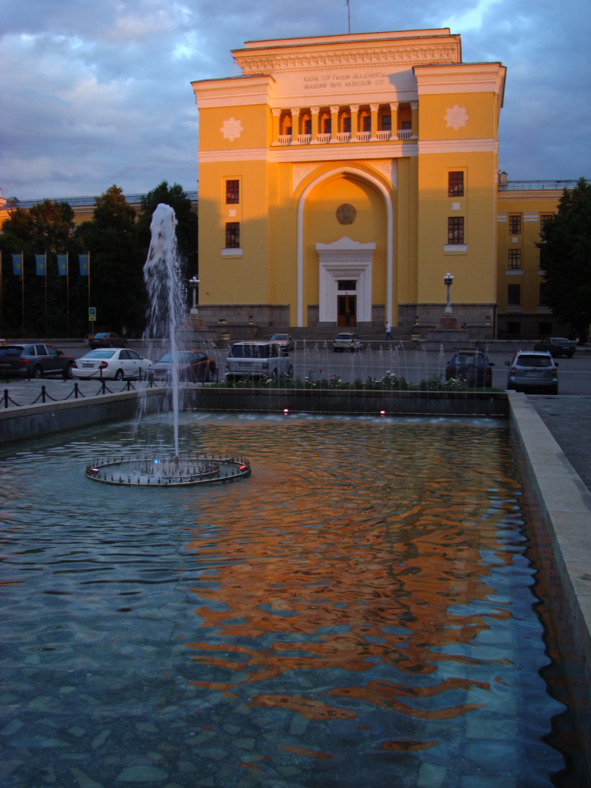
Two years later, Moscow masters- academician Shchusev, the Stalin prize laureate and author of the Lenin’s tomb, and the architect Prostakov made two designs for this project. First one you can see on the picture, and the second you can see in reality.
The stamp “the courtier architect of Stalin” and builder of Lenin’s Mausoleum suppressed all other architectural projects and achievements of Alexei Viktorovich Shchusev. Meanwhile, he had a certain reputation even before Russia became a “country of the Bolsheviks”. Take at least, well-known to all Kazakhstan senior generation, Kazansky railway station in Moscow, construction of which began in 1914.
But, admittedly, Shchusev showed what he could do only under the new government. During the first decade, he built not only a mausoleum, but also he was the director of the Tretyakov Gallery, took care of the first Soviet reconstruction plan of Moscow (after which only fragments remained from the old Moscow); he was one of the apologists of Soviet Constructivism (hotel “Moscow” was his brainchild).
Architect – academician made his contribution to the “development of national architecture of sister republics”. Many people saw his beautiful creation in Tashkent – Big Opera and Ballet Theatre. Large place in his postwar biography takes rebuilding of the destroyed cities: Istria, Novgorod and Chisinau. As for our Academy, Shchusev did not see his offspring – he died in 1949…
Why was rejected the first design? The answer was given in the book “Architecture of Alma-Ata” by M. Mendekulov, venerable Kazakhstani architect. The reasons were:
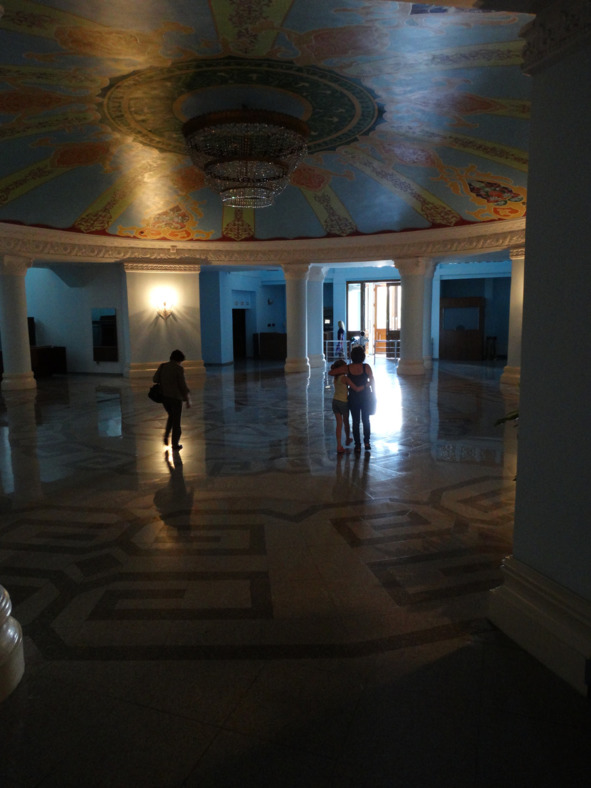
“First, the building had not clearly identified image of the Soviet scientific institution, it had some features of cult building from the past; main facade had massive solid portals and bulky spherical cupola, it resembled madrasas (spiritual schools). And secondly, the decoration of the building had not a national Kazakh ornament, making it look impersonally”.
Construction started by the second design in 1951. From this project were removed not only the “cult” elements, which so irritated officials, but also the co-author of the famous builder of the mausoleum.
Popular memories, that building was built by the Japanese prisoners of war, must be treated with caution; or rather, treat them as memories should be treated. Japanese builders are urban myth number 2 (the first one is about Trotsky). Therefore, if you believe in all such memories, then turns out that the whole old Alma- Ata was built by the valiant Japanese (and every other citizen at least once in their life have seen Leo Trotsky in the Ile reeds). I saw “Japanese track” even where the construction was completed before the Soviet Union entered the war against Japan.
Despite the plan, Presidium Building was not ready during the fourth five-year plan and in the fifth as well. Construction ended only in 1957 (and this was the sixth five-year plan!); but it was finished only from the front side, the back side was built a quarter century later.
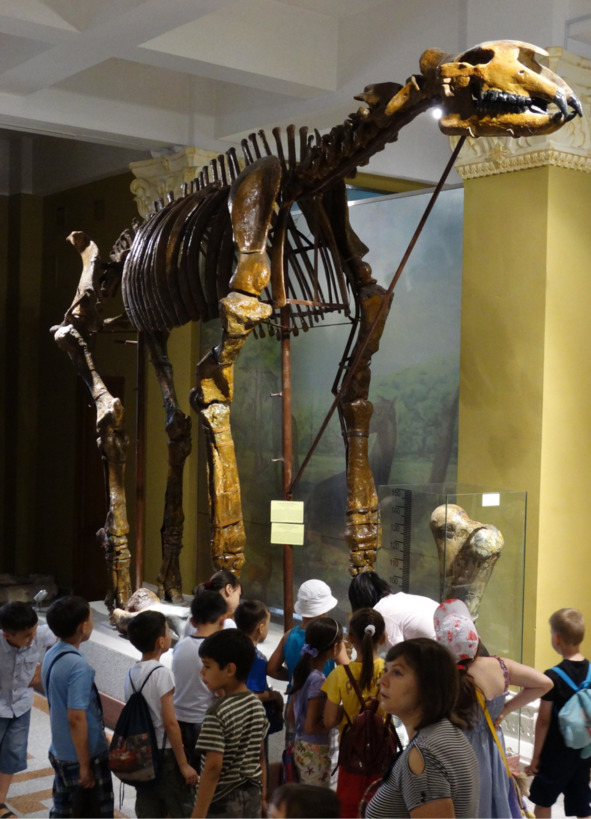
Few people know, that the Schusev and Prostakov project included not only the building of the Presidium, but the whole complex of the Academy of Sciences, that supposed to start at the main doors on Shevchenko street and end at the beautiful semicircular area on Kalinin Street (in the diagram). Interestingly, but the boulevard itself (now – street Valikhanova) was preserved to a certain extent; it cannot be said about the other part of the complex, which supposed to include institutions buildings and houses in the middle of parks and fountains. Only square in front of the Presidium was finished, but by other projects.
Despite the pomposity of the building, it became home for many generations of Alma-Ata inhabitants. Many people who are far from science, visited museums (inside the Academy) as children, many students attended the academic library, but most just walked around the Academy – no wonder that this place is considered as one of the most favorite among the citizens.
Kok Tobe, the sightseeing platform in Alma-Ata
To get a detailed view of the largest megalopolis in the country from above, you have neither to order a helicopter nor to search for the entrance to the roofs of the highest skyscrapers at all. To take a cable car at Abay square will be enough. Within ten minutes of ride you’ll see our southern capital under your feet and stretched out right in front of your eyes!
Конец ознакомительного фрагмента.
Текст предоставлен ООО «Литрес».
Прочитайте эту книгу целиком, купив полную легальную версию на Литрес.
Безопасно оплатить книгу можно банковской картой Visa, MasterCard, Maestro, со счета мобильного телефона, с платежного терминала, в салоне МТС или Связной, через PayPal, WebMoney, Яндекс.Деньги, QIWI Кошелек, бонусными картами или другим удобным Вам способом.



